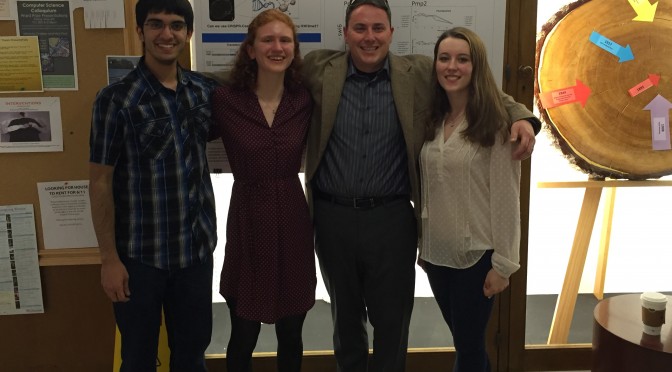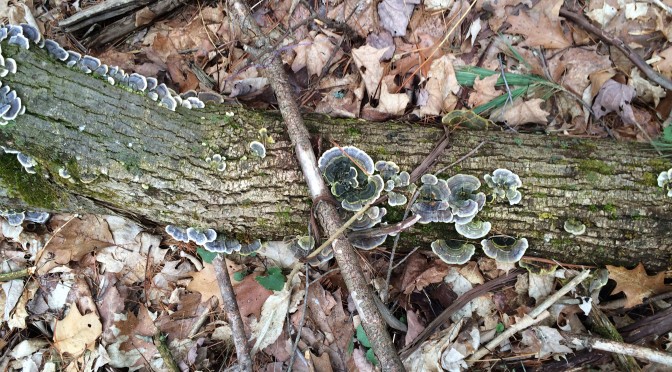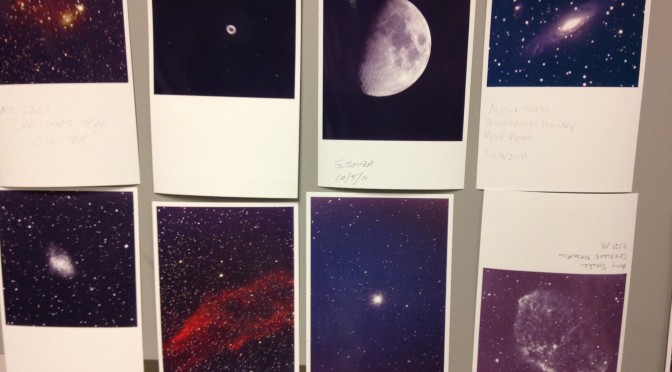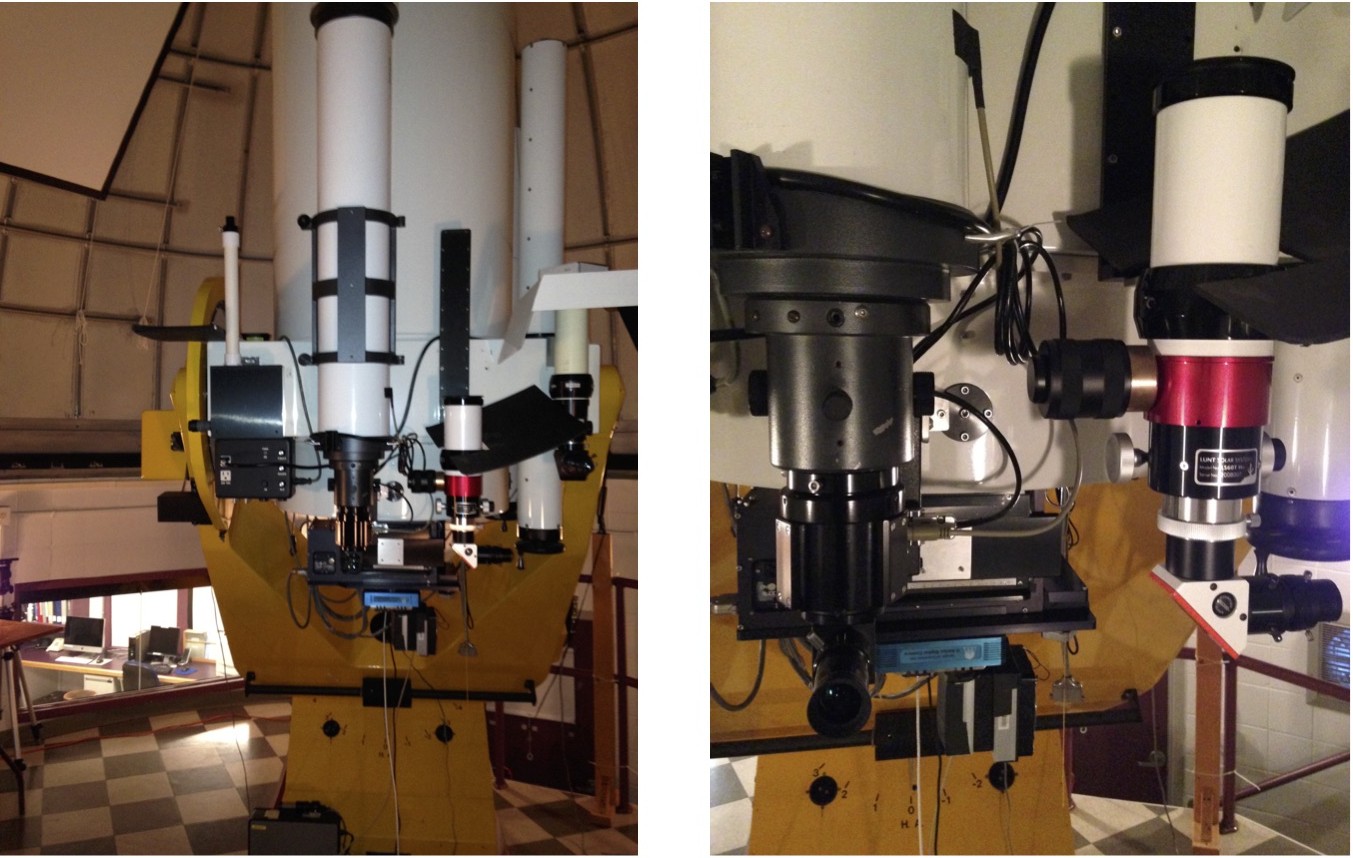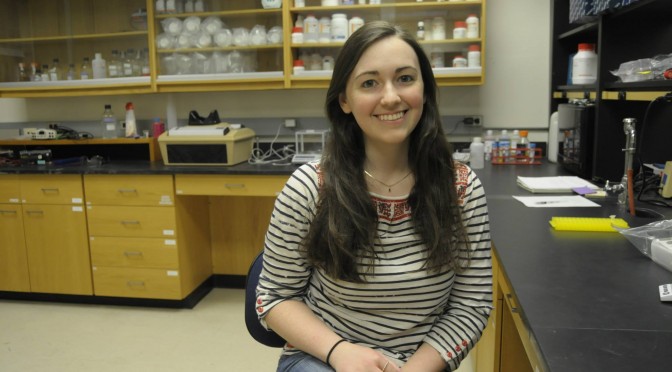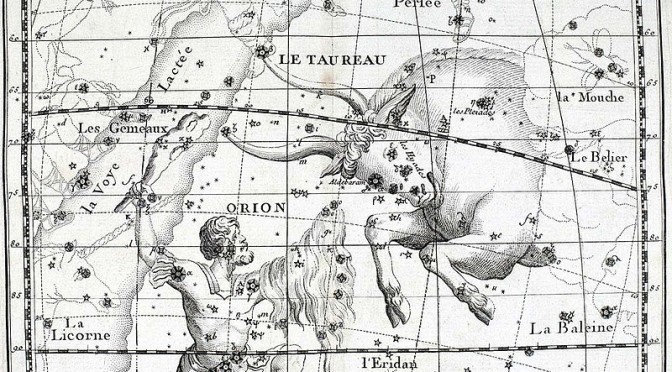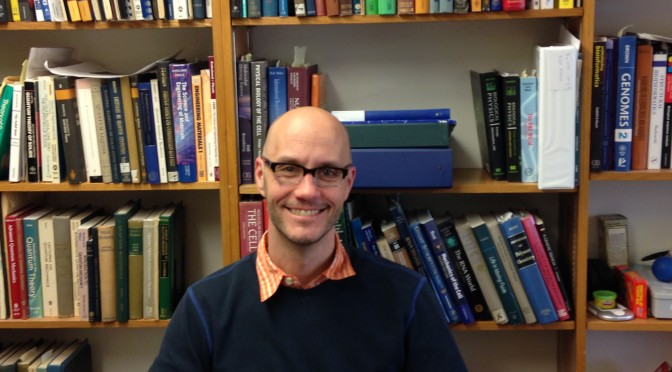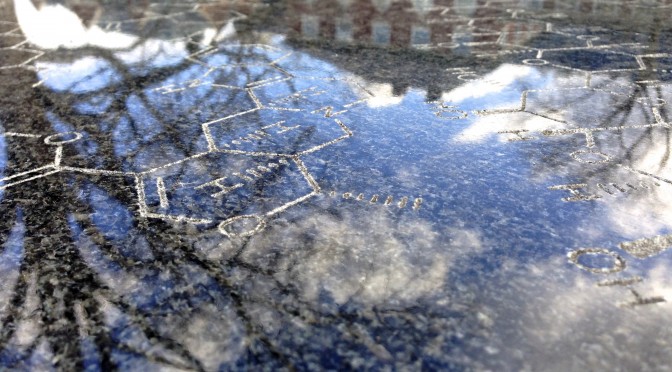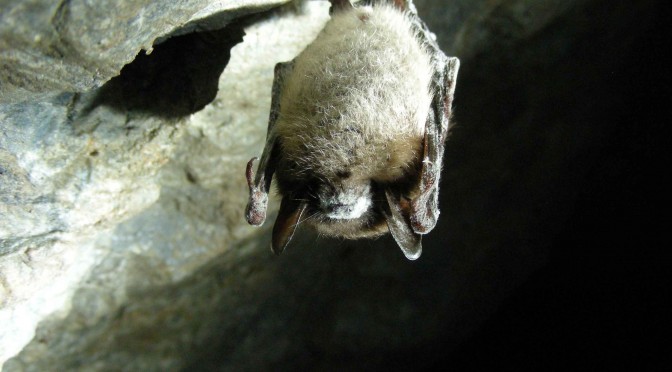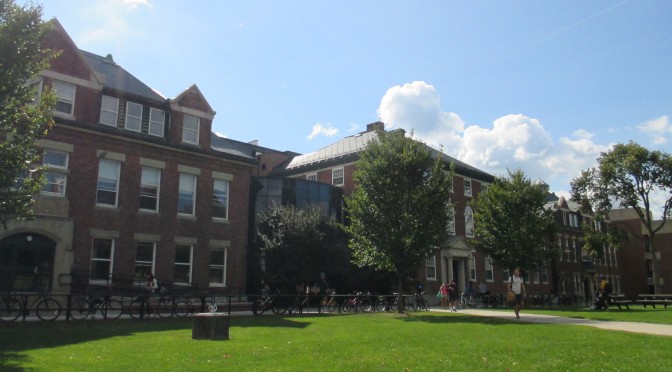By Meagan Goldman ’16
Image at top: Professor Ben Carone with his students at this year’s biology thesis poster session. From left to right: Ronak Dave ’17, Emily Shea ’16, Ben Carone, Sierra McDonald ’16.
Ben Carone is a heretic. Part philosopher, part biologist, he stumbled as an undergraduate upon a branch of genetics that challenges one of biology’s most accepted dogmas. Once he found the field, there was no turning back. He used to think a lot about the meaning of life, he told me, but philosophy didn’t help him much with that. It was science – and belief in his research – that hooked him.
His blasphemy is this: Charles Darwin was wrong. At least, he was partly wrong. Across a bare desk in his basement office at Williams College, Carone explained to me that in the nineteenth century, two dueling theorists proposed their own versions of evolution. One was Jean-Baptiste Lamarck, the other Darwin.
Continue reading The Other Genome: A Profile of Biology Prof Ben Carone
